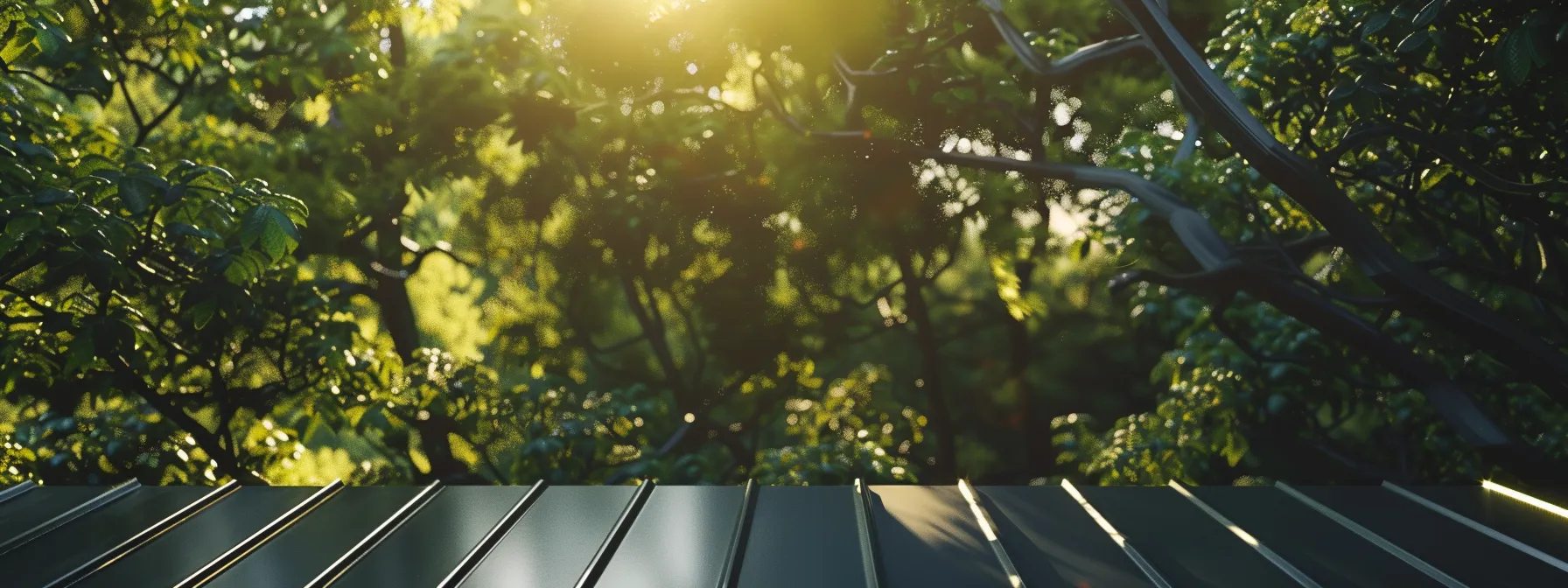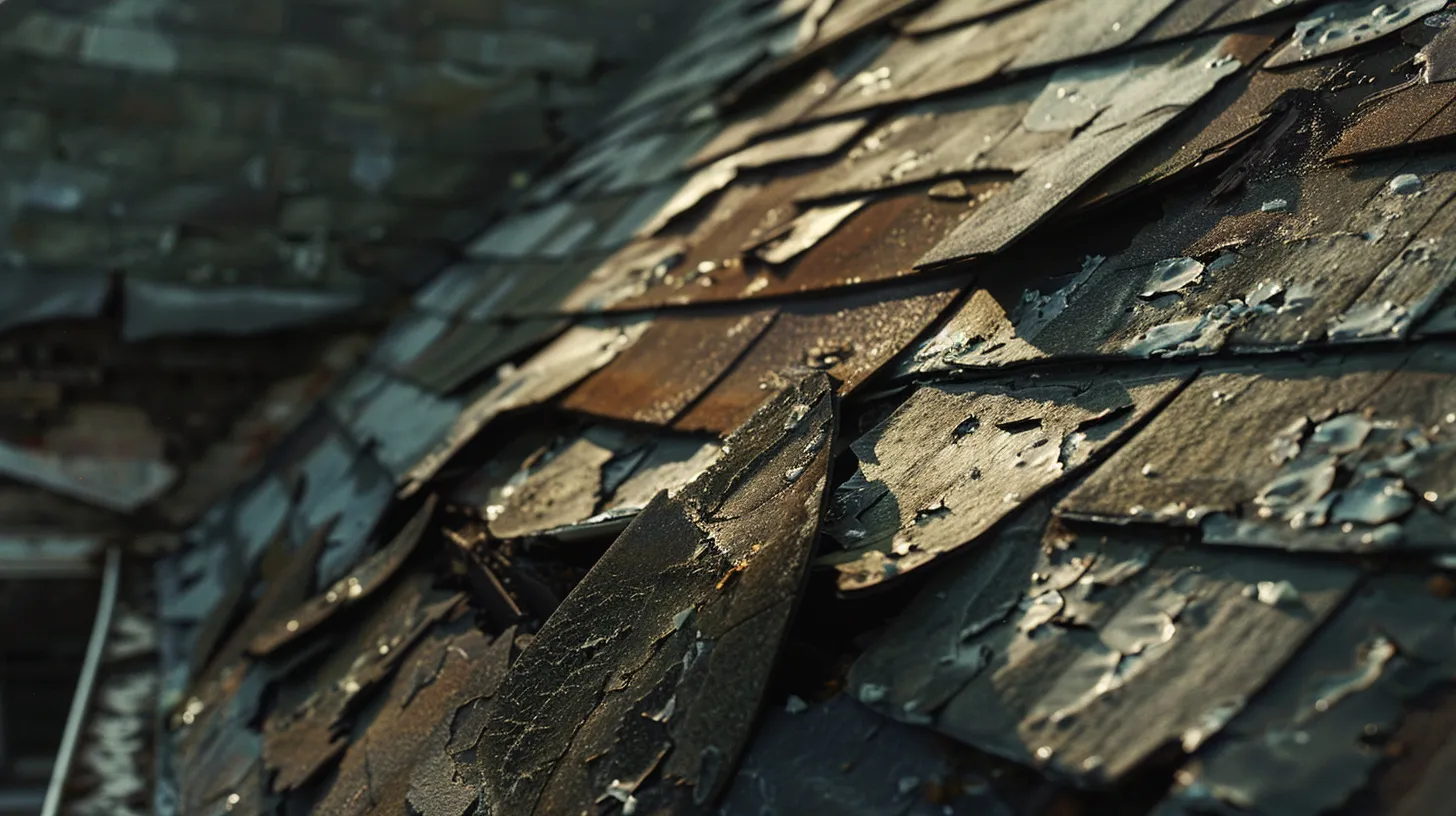
Understanding Roof Lifespan: Signs of Potential Damage
Understanding Roof Lifespan and Damage Signs
Have you ever wondered how long your roof lasts and what signs indicate it might need repair? In this post, you will learn about roof lifespan factors and ways to spot signs of wear and tear. You will also find guidance on identifying structural damage and the benefits of regular inspections by a roofing contractor. This clear approach helps solve your concerns about costly repairs, saving you time and money while ensuring your home stays safe.
Key Takeaways
- regular inspections help detect early roof damage
- quality materials and careful installation extend roof life
- timely maintenance prevents costly repairs and leaks
- severe weather can weaken roof components
- cleaning and proper drainage support roof durability
You understand that the lifespan of your roof depends on the quality of materials used, whether it’s an asphalt shingle or another option, and regular upkeep is key to avoiding issues.
You should inspect your roof for damage after severe weather events, as heavy winds and rain can weaken the structure and lead to leaks.
You know that components like the dam area play an important role in managing water flow and protecting not only your roof but also the spaces below it.
You recognize that maintaining your lawn around your home involves keeping overhanging branches trimmed, as debris can fall onto the roof and cause damage to an asphalt shingle covering.
The key points have set the stage. Now, you will learn what keeps your roof standing strong for years.
Understanding Roof Lifespan Factors
You will learn how common materials like slate and asphalt perform over time, guided by simple maintenance practices. This section explains how regular downspout cleaning and chimney checks help you detect curling shingles and other issues caused by sunlight exposure. You also gain insight into how high-quality installation practices contribute to your roof’s lasting performance.
Common Materials and Their Lifespan
You need to understand the performance of common roofing materials in various conditions. You will notice that roofs made of asphalt or slate may suffer from damage when exposed to hail and strong moisture, potentially resulting in a leak if regular waterproofing measures are not applied:
You should also consider that different materials require distinct upkeep routines. You can apply practical steps such as thorough downspout cleaning and periodic waterproofing checks to prevent water accumulation and leaks, ensuring that your roofs remain robust against adverse weather conditions.
Maintenance Practices That Extend Lifespan
You can extend your roof’s service life by keeping up with routine care and immediate repairs. Regular inspections, which check for signs of flood damage or loose wood shingle sections, help you address issues early and ensure that your rafter support remains strong. Keeping a close eye on roof tiles and the metal roof structure also plays a vital role in preventing further deterioration.
You should maintain your roof by scheduling professional evaluations to check for stress or moisture problems that could lead to leaks. Consistent routine cleaning and targeted repairs on roof tiles, wood shingle segments, and metal roof components reduce the chance of extensive flood damage while preserving the integrity of your rafter system. This proactive approach provides peace of mind and long-term durability for your home.
The Role of Installation Quality
You understand that installation quality plays a significant role in the durability of your flat roof, preventing leaks and roof damage while minimizing mildew issues. Your construction project should emphasize appropriate material application and precise techniques to avoid potential problems at an early stage:
- Thorough inspection of seams and joints
- Correct alignment of roofing components
- Regular maintenance checks for signs of mildew
- Ensuring effective drainage to reduce leak risks
You acknowledge that careful attention to installation details directly impacts the overall performance of your flat roof, reducing the likelihood of costly repairs. By adhering to proven construction practices, you protect your home from leaks and related complications while ensuring long-term reliability and security.
You now understand what shapes a roof’s longevity. Look ahead to spot the hints that reveal its true state.
Identifying Signs of Roof Wear and Tear
You look for missing or broken shingles, water stains near your attic, and moss or algae growth. A proper inspection guides you toward timely roof repair replacement, preventing a damaged roof and ensuring longevity. This set-up helps you catch issues before they worsen, saving you from major repairs later.
Recognizing Missing or Damaged Shingles
You notice signs of missing or damaged shingles when you inspect your roof closely during daylight. Spotting broken tile pieces or areas where wood is exposed helps you identify shingle damage early, allowing you to address the issue before condensation leads to further deterioration.
You can prevent extended repair costs by checking your roofing materials when you see gaps or deteriorated surfaces. Observing these details, such as wood that lacks protective shingle layers, offers practical insight into potential repairs needed to maintain your roof’s longevity.
Noticing Water Stains on Interior Surfaces
You observe a stain on your ceiling, and it may indicate that water is entering through damaged areas on your roof. You should investigate your gutters for clogs or misalignment, as poor drainage might contribute to curling shingles or even the formation of an ice dam during cold weather, which can result in leaks inside your home.
You can rely on a trusted roofer to inspect these signs and provide actionable advice, ensuring that you address the water stain issue before it leads to further complications. You benefit from prompt repairs that prevent additional moisture problems and ensure the long-term performance of your roof.
Detecting Moss or Algae Growth
You observe moss or algae growth on your roof shingle that may be caused by prolonged exposure to ultraviolet rays and a moist climate; this buildup can indicate that your roof is not draining properly, which might eventually affect your ceiling.:
- Thorough inspection of roof shingle surfaces
- Regular cleaning practices
- Monitoring pest activity affecting the roof
You recognize that the presence of moss or algae can serve as an early alert to maintenance issues and might also attract pest infestations, potentially compromising your roof shingle’s integrity and causing ceiling water stains. Regular checks along with proper cleaning routines help you manage these problems efficiently and extend your roof’s lifespan.
Your roof speaks volumes about wear and tear. Now, uncover the quiet warnings of damage beneath its surface.
Signs of Structural Damage
You examine sagging and warping, roof punctures, and holes while checking flashing and ventilation around your deck. You also spot storm damage, corrosion, debris, and other wear and tear signs that help you address potential structural issues with precision and confidence.
Observing Sagging and Warping
You observe your roof for signs of sagging and warping by checking areas near flashing and caulk joints, ensuring that moss and algae buildup has not compromised the structure. You note these irregularities to assess if your home insurance coverage might help with costly repairs.
You inspect the roof’s framework closely to determine early damage from water intrusion and debris accumulation. You rely on first-hand expertise to notice that consistent wear, marked by areas where caulk has deteriorated and algae or moss have spread, calls for immediate maintenance to prevent further shifting of the structure.
Understanding Roof Punctures and Holes
You notice that roof punctures and holes often result from strong wind and wind damage, compromising the ventilation system and proper drainage. Addressing these issues through a roof replacement or targeted repair can restore your roof’s integrity and protect your home from further weather-related harm.
You should consider inspecting these weak spots immediately to prevent additional structural concerns. Clear pathways for drainage and effective ventilation are essential to prevent moisture build-up and further wind damage, ensuring your roof remains secure and functional.
Evaluating Issues With Flashing and Ventilation
You inspect flashing and ventilation regularly to prevent a roof leak and avoid costly water damage. You may notice that poor roofing techniques can also affect your siding and air conditioning, which makes a clear understanding of these elements essential for proper maintenance.
You evaluate these areas by checking if improper ventilation or damaged flashing is present, as these issues can lead to a compromised roof leak scenario. You benefit from addressing these weaknesses early, as proper roofing care ensures that your air conditioning runs efficiently and significantly reduces the risk of water damage to your siding.
Your home shows clear warnings, and you must not ignore them. You check risks and learn that steady watch saves a structure.
The Importance of Regular Inspections
You set a schedule for regular roof inspections to spot early wear or potential failure. You weigh the benefits of hiring professionals versus DIY checks, paying attention to metal details and other signs. This guide offers practical insights on setting an inspection routine and identifying damage during each roof inspection.
Creating an Inspection Schedule
You set up a regular inspection schedule to keep your roof in top condition and quickly address any signs of damage. You follow a routine that includes detailed evaluations after adverse weather events and seasonal changes, ensuring any wear or structural issues are identified early.
You plan your inspections at set intervals, balancing DIY checks with professional evaluations when needed. You understand that a well-timed inspection process not only preserves your roof’s lifespan but also minimizes repair costs over time.
Hiring Professionals vs. DIY Inspections
You may find that professional inspections bring a higher level of accuracy and efficiency when evaluating your roof’s condition. Relying on a trusted expert, you benefit from thorough inspections using tools and techniques that uncover hidden damage, ensuring that your home remains safe and cost-effective to maintain.
If you decide on a DIY approach, you must maintain a clear understanding of the necessary steps to spot early signs of wear. However, when the task grows too complex, you can turn to qualified inspectors who provide actionable insights, saving you time and preventing expensive repairs in the future.
What to Look for During Inspections
You review every corner of your roof for visible damage, such as missing shingles, cracked surfaces, and evidence of water leakage. You check for signs of debris accumulation and improper drainage during your routine inspection:
You examine each area with focus and apply practical checks that mirror your needs. You prioritize aspects that affect the roof’s overall durability and address issues promptly by engaging a trusted specialist when the complexity of repairs increases.
Regular checks give you clear signs of wear. Next, you will find answers to common questions on how long your roof can last.
Frequently Asked Questions About Roof Lifespan
You will find answers on how to monitor roof condition effectively, recognize signs that indicate an aging roof, and understand weather’s impact on durability. These topics offer clear insights into daily evaluations, aging indicators, and weather-related effects, guiding you to timely maintenance and repair actions that keep your roof performing at its best.
How Can Homeowners Monitor Roof Condition?
You monitor your roof condition by scheduling regular visual inspections and paying attention to signs of wear such as missing shingles or water stains on your ceiling. You start by checking every section thoroughly after severe weather events to catch any early damage before it escalates:
You also find that combining DIY checks with regular evaluations by trusted roofing experts provides you with a comprehensive view of your roof’s condition. This balanced approach ensures that you address minor issues promptly, extending the lifespan of your roof while keeping your home protected against further damage.
What Are the Signs of an Old Roof?
You notice that your old roof may show signs like cracked shingles and peeling surfaces, which indicate natural wear over time. Regular inspections help you determine if your roof is nearing the end of its service life.
You observe additional issues that require your attention:
- Missing or broken shingles affecting coverage
- Water stains on interior walls suggesting leaks
- Visible sagging areas indicating structural stress
These signs guide you to take timely action and keep your home secure.
How Does Weather Affect Roof Lifespan?
You notice that prolonged exposure to harsh weather, including strong winds and heavy rain, can accelerate the aging of your roof. These conditions increase stress on roofing materials, making regular maintenance and timely inspections essential for preserving the integrity of your roof.
You experience more rapid wear when your roof faces extreme temperatures and moisture variations. Monitoring your roof after intense weather events helps you detect early damage, ensuring that you address issues before they lead to severe problems.
Your questions have led you to solid facts about roof lifespan. Now, you stand ready to see the final words that tie every detail together.
Conclusion
You review your roof’s performance by tracking signs of wear and arranging regular inspections. Preventive care and routine checks help you identify potential issues early.
You balance DIY checks with professional evaluations to maintain your roof’s lifespan and protect your home from weather-related damage:
You keep your roof in top condition by scheduling timely evaluations and addressing repairs promptly. Your efforts protect your investment and secure your home.
You make informed decisions by monitoring damage signs and understanding material performance. Your proactive approach results in a safer and more dependable roof.
Frequently Asked Questions
What is roof lifespan and its influencing factors?
Roof lifespan varies based on material quality, climate conditions, maintenance routine, and installation skill. A well-maintained roof offers longer service life, delivering reliable protection for your home.
What causes roof wear and tear?
Your roof experiences wear from constant exposure to sun, rain, wind, and debris. Regular inspections and upkeep help slow material degradation and maintain effective protection for your home.
How do you detect structural damage on roofs?
You can spot structural damage on roofs by checking for sagging areas, broken shingles, or signs of water intrusion; hiring a local roofing contractor to inspect closer ensures you address issues quickly and maintain your home’s safety.
Does regular inspection improve roof longevity?
Regular roof inspections help identify minor issues before they escalate. This routine check enables you to perform necessary repairs, which can extend roof lifespan and minimize costly damage.
How can inspections prevent further roof damage?
Regular roof inspections help you spot early issues, letting you fix minor problems before they worsen, maintain your home’s condition, and reduce repair costs.
Conclusion
You learn that monitoring your roof’s lifespan and damage signs guards against expensive repair costs and structural issues. Regular evaluations, whether DIY or professional, help you spot early indicators of wear and tear. You prevent severe damage by maintaining proper waterproofing and checking key elements like shingles, flashing, and drainage systems. Your proactive approach ultimately secures your home’s safety and preserves your investment.





